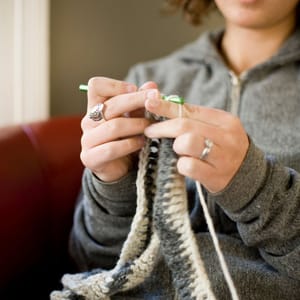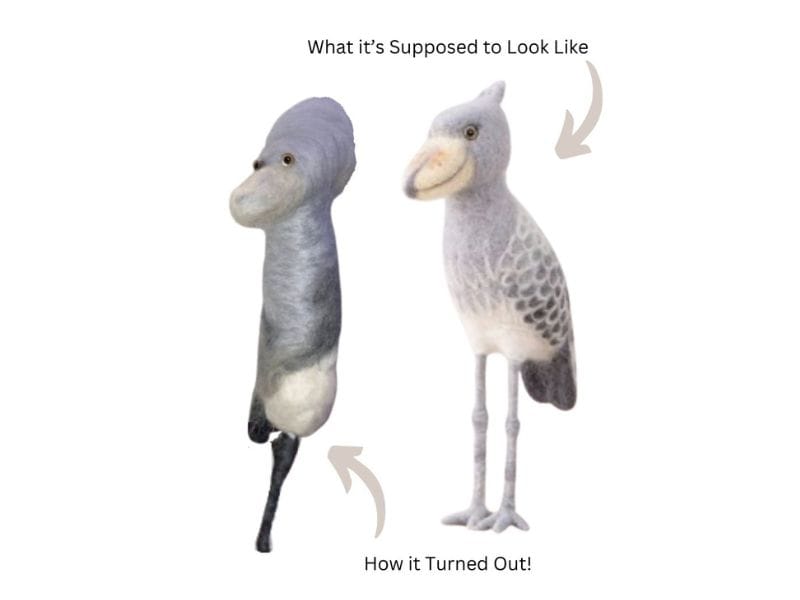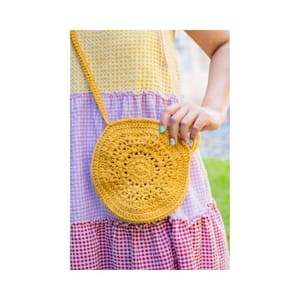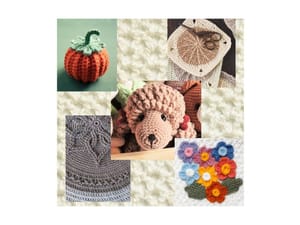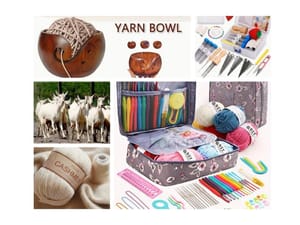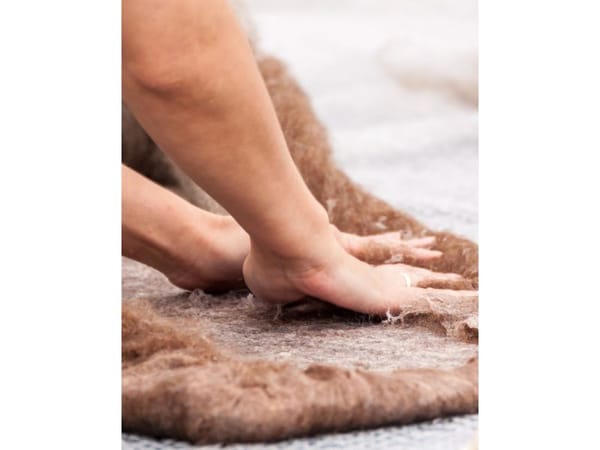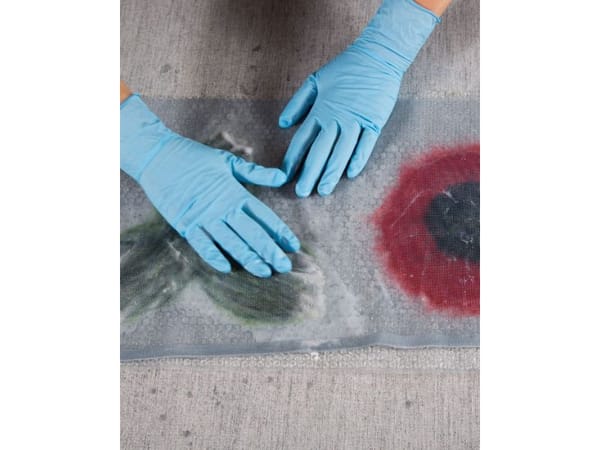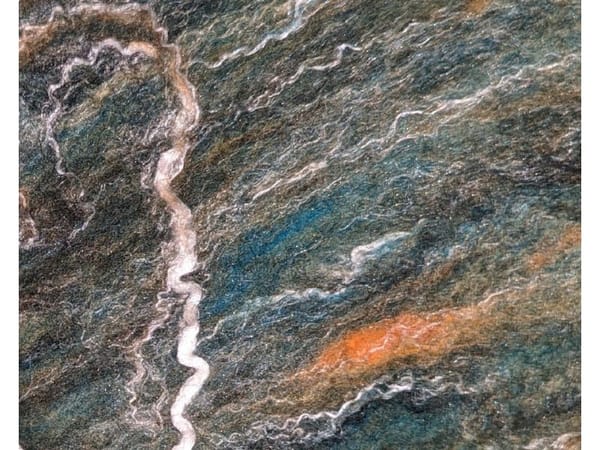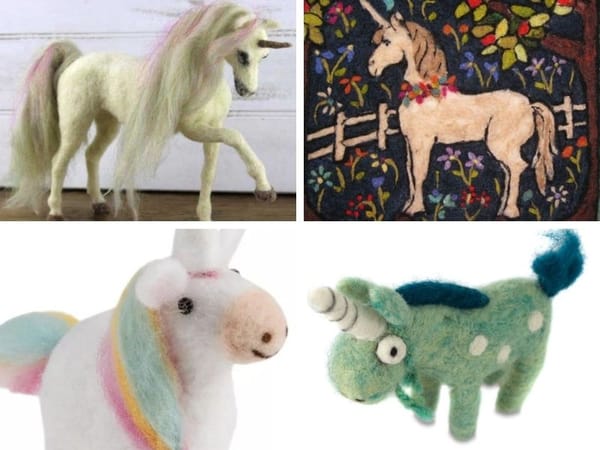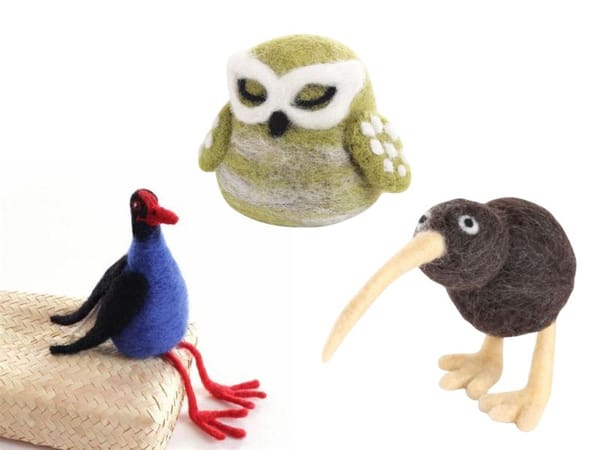Needle felting is a fun and engaging craft that allows you to create beautiful sculptures and items using wool fibers.
However, like any craft, it comes with its own set of challenges, and bad needle felting can be a crack up, or incredibly frustrating.
If you're a first timer or even a seasoned needle felter, understanding the common mistakes can save you a lot of that frustration and help you enjoy your needle felting adventure.
Key Takeaways:
- Understanding the basics of needle felting can prevent common mistakes.
- Proper technique and tools are crucial for successful needle felting projects.
- Learning from others' experiences can enhance your needle felting journey.
Choosing the Wrong Wool & Using the Wrong Needles
One of the most common mistakes of needle felting is selecting the wrong type of wool. Not all wool fibers are created equal, and using the wrong kind can make your felting process much harder. For beginners, it’s advisable to start with wool that is specifically designed for needle felting. This type of wool is easier to work with and felts more quickly.
Using wool that is too coarse or too fine can lead to frustration. Coarse wool may not felt smoothly, while fine wool can be too delicate and break easily. Always check the wool's texture and suitability for your project before you start needle felting.
Felting needles come in different gauge sizes and shapes and using the wrong one can lead to breaking needles or unsatisfactory results. One of the most common mistakes is using a felting needle that is too fine for the initial stages of your needle felt. Fine needles are great for detail work but can break easily if used for the initial shaping.
Start with a medium or coarse needle to shape your basic forms, and then switch to finer needles for detailing. This approach will not only save your needles but also give you better control over your needle felting project.
The perfect solution for avoiding these needle felting mistakes is to start with a needle felting kit if you're a beginner.
A needle felting kit will teach you how much wool fiber you need for a project, how the felting wool feels, they come with the correct size felting needle, detailed instructions, and some come with felting cushions.

Not Using a Needle Felt Cushion & Overworking the Wool
A needle felt cushion is essential for protecting your needles and your work surface. One of the most common mistakes beginners make is felting directly on a hard surface, which can lead to breaking needles and damaging your table. A good needle felt cushion provides a soft surface that allows the needle to pass through the wool without hitting a hard surface.
Investing in a quality needle felt cushion can make a significant difference in your needle felting. It not only protects your tools but also makes the felting process more comfortable and enjoyable.
Another common mistake is overworking the wool which can lead to frustration. When you felt wool too much, it can become too dense and hard to shape. This is especially true for beginners who might think that more stabbing will result in a better-felted item.
Instead, focus on making short, quick stabs and gradually shaping the wool. This technique allows you to control your felting better and prevents the wool from becoming too compacted.

Ignoring Needle Felt Safety Precautions
Needle felting involves sharp needles, and ignoring safety precautions can lead to injuries. One of the most common mistakes is not paying attention to where your fingers are in relation to your felting needle. It’s easy to get engrossed in your work and accidentally stab yourself.
Always be mindful of your fingers and use finger protectors if necessary. Additionally, take regular breaks to rest your hands and avoid fatigue, which can lead to accidents.
Been there, done that (sometimes still do), and really hate it! 😧😰😢😭

Not Starting with Basic Needle Felt Shapes & Using Too Much Wool
Jumping into complex designs without mastering basic shapes is a common mistake among beginners. Basic shapes like balls, cylinders, and cones are the building blocks of most needle-felt items. Mastering these shapes will give you a solid foundation for more complex projects.
Start with simple projects and gradually move on to more intricate designs. This approach will help you build your skills and confidence in your needle felting.
Using too much wool at once can make the process of felting more difficult. It’s a common mistake to think that more wool will make the felting faster. However, using too much wool can make it hard to shape and control.
Start with small amounts of wool and add more as needed. This technique allows you to shape the wool more easily and achieve a smoother finish.
I am guilty of both of these mistakes.
In addition to these, I only started with one beginner kit. Though it turned out great, that experience gave me false confidence. Because I started with a kit and didn't immediately practice basic shapes, every project from that first kit forward ended up in the trash.
I used way too much wool all at once thinking it would felt quickly when instead it just became an unruly shapeless blob of wool.

Not Understanding Needle Sizes
Felting needles come in different sizes, and not understanding their uses can lead to mistakes. Larger needles are used for initial shaping, while smaller needles are used for detailing. Using the wrong size needle can result in breakage or unsatisfactory results.
Familiarize yourself with the different needle sizes and their uses. This knowledge will help you choose the right needle for each stage of your needle felting project.
Skipping Needle Felt Tutorials and Guides
Skipping tutorials and guides is a common mistake that can hinder your progress. There are many resources available, including short videos, tutorials, and books, that can provide valuable tips and techniques.
Take advantage of these resources to learn from experienced needle felters. Watching a short video or following a tutorial can provide insights and techniques that you might not discover on your own.

Not Experimenting with Different Techniques
Sticking to one technique and not experimenting with different methods can limit your creativity. Needle felting offers a variety of techniques, including wet felting, using wire armatures, and incorporating different materials.
Experiment with different techniques to discover what works best for you. This experimentation can lead to new ideas and improve your needle felting skills.
Neglecting to Plan Your Needle-Felt Project
Not planning your needle-felt project can lead to mistakes and frustration. It’s important to have a clear idea of what you want to create, and the steps involved. This planning includes choosing the right wool, needles, and other materials.
Take the time to plan your project and gather all the necessary materials before you start. This preparation will make felting smoother and more enjoyable.

Not Paying Attention to Details & Not Using Reference Images
Ignoring the details can result in a less polished final product. Details like smooth surfaces, even shapes, and clean lines are what make needle felt items stand out. One of the most common mistakes is not spending enough time on these details.
Pay attention to the small details and take the time to refine your work. This attention to detail will elevate your needle felting and make it more professional.
Creating needle felt items without reference images can lead to inaccuracies. Whether you’re making animals, people, or abstract designs, having a reference image can guide you and ensure accuracy.
Use reference images to guide your work and check your progress. This practice will help you create more realistic and accurate needle-felted items.

Not Practicing Enough & Not Seeking Advice
Like any craft, needle felting requires practice. One of the most common mistakes is expecting perfect results without putting in the time to practice. The more you practice, the better you will become at controlling the wool and shaping your designs.
Set aside regular time to practice and experiment with different techniques. This practice will improve your skills and make your needle felting much more enjoyable.
Also, not seeking advice from experienced needle felters can limit your progress. There are many experienced felters who are willing to share their knowledge and tips. Joining a needle felting community or taking a class at the Bear Creek Needle Felting Academy can provide valuable insights and support.
Seek advice from experienced felters and learn from their experiences. This advice can help you avoid common mistakes and improve your needle felting skills.

Not Taking Care of Your Tools
Neglecting to take care of your felting needles and other tools can lead to problems. Needles can become dull or bent, and not maintaining them can affect your work. One of the most common mistakes is not storing needles properly, leading to damage.
Take care of your tools by storing them properly and replacing them when necessary. This care will ensure that your tools are always in good condition and ready for use.
Not Using Patterns & Not Being Patient
Creating needle felted items without patterns can lead to inconsistencies. Patterns provide a guide and help ensure that your designs are accurate and consistent. One of the most common mistakes is not using patterns, especially for complex designs.
Use patterns to guide your work and ensure accuracy. This practice will help you create more consistent and professional needle felted items.
Needle felting requires patience, and rushing the process can lead to mistakes. One of the most common mistakes is trying to complete a project too quickly. Felting takes time, and rushing can result in uneven shapes and poor quality.
Be patient and take your time with each step of the felting process. This patience will result in better quality work and a more enjoyable needle felting journey.
Not Using the Right Amount of Pressure
Using the wrong amount of pressure while felting can lead to problems. Too much pressure can break the needle, while too little pressure can result in loose and uneven felting. One of the most common mistakes is not finding the right balance.
Experiment with different amounts of pressure to find what works best for you. This experimentation will help you achieve better control and results in your needle felting.

Not Taking Breaks
Not taking breaks can lead to fatigue and mistakes. Needle felting can be a repetitive and time-consuming process, and not taking breaks can result in tired hands and eyes. One of the most common mistakes is working for long periods without resting.
Take regular breaks to rest your hands and eyes. This practice will help you stay focused and avoid fatigue, leading to better quality work.
Not Using the Right Tools for Details
One of the most common mistakes is not using the right tools for detailing which can lead to unsatisfactory results. Detail work requires precision, and using the wrong needle or tool can make it difficult to achieve the desired effect.
Use fine needles and other tools designed for detail work. This practice will help you achieve more precise and professional results in your needle felting.
Wrapping Up
Needle felting is a rewarding and creative craft, but it comes with its own set of challenges.
I have made most of the needle felting mistakes on this list (wet felting is much more forgiving).
By understanding and avoiding common mistakes, you can enhance your needle felting journey and create beautiful, professional-quality needle felted items.
- Remember to choose the right wool and needles, use a felting cushion, and pay attention to details.
- Practice regularly, seek advice from experienced felters, and take care of your tools.
With patience and practice, you can master the art of needle felting and enjoy this wonderful craft.

What type of wool is best for beginners in needle felting?
For beginners, it’s best to use wool that is specifically designed for needle felting. This type of wool is easier to work with and felts more quickly. Avoid using wool that is too coarse or too fine, as it can make the felting process more difficult.
How can I prevent breaking my felting needles?
To prevent breaking your felting needles, use the right size needle for each stage of your project. Start with a medium or coarse needle for initial shaping and switch to finer needles for detailing. Additionally, use a felting cushion to protect your needles and avoid felting directly on a hard surface.
What are some tips for beginners in needle felting?
For beginners, start with simple projects and basic shapes to build your skills. Use the right type of wool and needles and invest in a good felting cushion. Watch tutorials and seek advice from experienced felters to learn new techniques. Practice regularly and be patient with the process.


Images Source: Canva, The Woolery, Michaels, 9gag.com, feltandyarn.com

